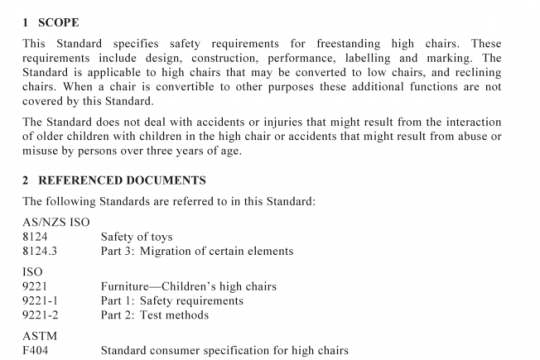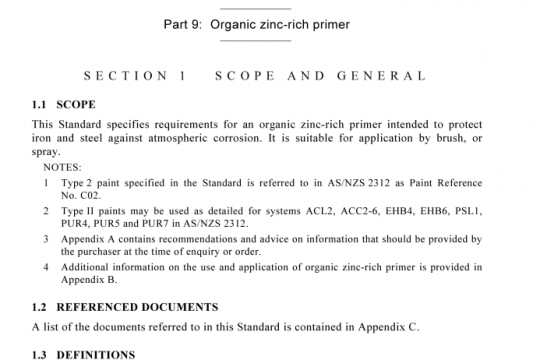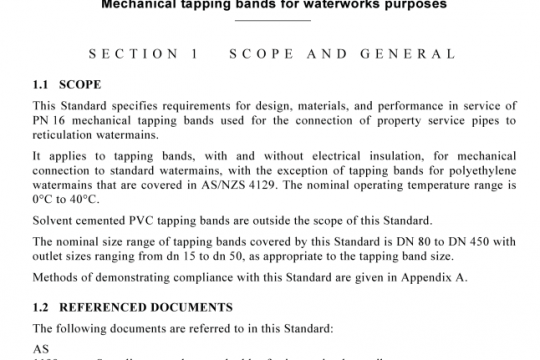AS NZS 60079.28:2016 pdf free
AS NZS 60079.28:2016 pdf free.Explosive atmospheres Part 28: Protection of equipment and transmission systems using optical radiation
Electrical equipment and electrical Ex Components (e.g. fibre optic terminal devices) shall comply with one or more of the specific electrical equipment protection technique standards listed in IEC 60079-0 suitable for the application if intended to be installed inside the hazardous area.
Optical equipment shall be subjected to a formally documented ignition hazard assessment using the principles stated in Annex C. This assessment shall be made to determine which possible optical ignition source can arise in the equipment under consideration, and which measures may need to be taken to mitigate the risk of ignition.
If a source of optical radiation is inside an enclosure providing a protection of minimum IP 6X,after the tests specified in IEC 60079-0 for enclosures, the ingress of absorbing targets from the outside of the enclosure need not be taken into consideration, but the existence of internal targets shall be taken into consideration. However where the optical radiation may leave such an enclosure, the requirements of this standard also apply to the emitted optical radiation.
Inherently safe optical radiation means that the visible or infrared radiation is incapable of supplying sufficient energy under normal or specified fault conditions to ignite a specific explosive atmosphere. The concept is a beam strength limitation approach to safety. lgnition by an optically irradiated target absorber requires the least amount of energy, power, or irradiance of the identified ignition mechanisms in the visible and infrared spectrum. The inherently safe concept applies to unconfined radiation and does not require maintaining an absorber-free environment.
The actual driver circuitry is replaced with a separate variable source of supply. This source of supply is then used to provide variable inputs to the optical device,with maximum optical power measured. No faults are considered. Ten samples of the optical device are to be tested at ambient temperature between 21 °C and 25 °C. The maximum optical power is then taken from the highest power that can be measured at the ten samples before the optical device shuts down or folds back.AS NZS 60079.28 pdf free download.




